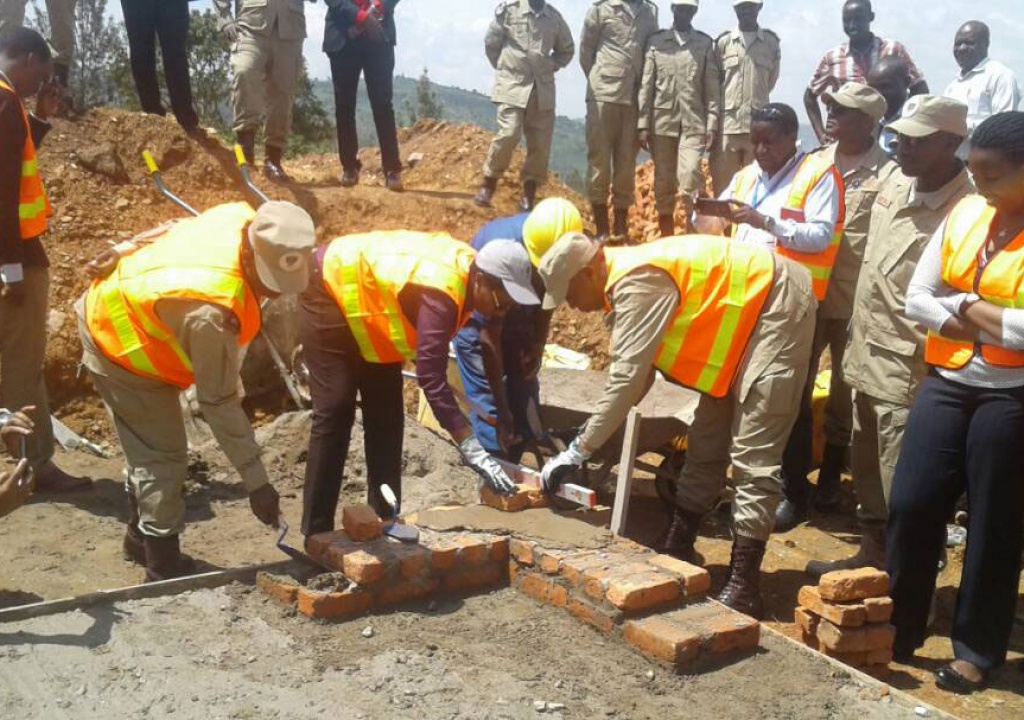
REMA and RCS officials lay a foundation stone for the water waste construction project
Residents of Mageragere sector will no longer have to worry about air pollution caused by smelly waste from the Nyarugenge prison.
On Thursday, the government launched construction works for an improved semi natural wastewater treatment plant at Nyarugenge Prison as part of the Green Rwanda growth initiative.
“We put a lot of effort in controlling sources of pollution that may damage our water bodies and reserves. Establishing a state-of-the-art treatment plant at Nyarugenge Prison will prevent any potential risk of contaminating surface and groundwater reserves,” said Eng. Coletha Ruhamya, the Director General of REMA.
The plant will treat, recycle and re-use the waste water generated from Nyarugenge prison, helping to protect the surrounding environment according to REMA’s Jacques Nsengiyumva while explaining the technicalities.
Construction of the treatment system will be complete by end of December 2017 at a cost of Rwf162.5m. It is co-financed by Rwanda Environment Management Authority (REMA) through Lake Victoria Environmental Management Project Phase two (LVEMP II) with 69% of the total cost and Rwanda Correctional Services (RCS) contributing 31%.
The waste water treatment facility will use cost-effective Low Impact Development Technology (LID Tech) which promotes the recycling and re-use approach. The system uses environment-friendly and locally-sourced materials and tools in seeking responses to waste water management.
At Nyarugenge Prison, the resulting waste matter will be used for irrigation of the Community Sanitation Garden (CSG) to improve agricultural productivity of the prison in dry and rainy seasons.
The pilot coverage area is 1.5 hectares that will be partitioned into paddocks of fruits, vegetables and other plants of direct use to the prison. It is expected that 30 liters per capita per day will be treated and reused for irrigation, which implies the overall water savings and reuse of 360m3.
According to a 2010 report by UNEP titled, “Waste and Climate Change: Global Trends and Strategy Framework,” methane gas from landfills represent the largest source of emissions from the waste sector, contributing around 700 tonnes.
On December 4th, an e-waste recycling and dismantling facility, worth $1.5 million (about Rwf1.2 billion) was inaugurated in Bugesera District in Eastern Province to transform e-waste into valuable materials, minimise the effect of environmental hazards and offer more green jobs.
An increase in electronic, electrical and ICT equipment which grew 10 fold between 2001 and 2015 while the subscription of the mobile phone has increased from 1.6 million in 2001 to 8.5 million by this June could cause environmental hazards.

